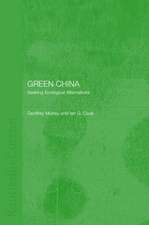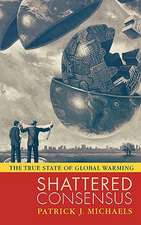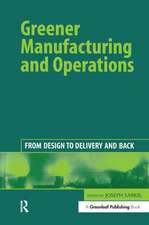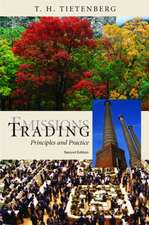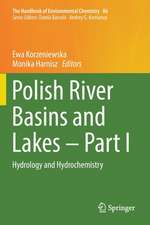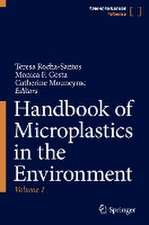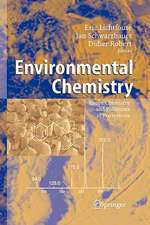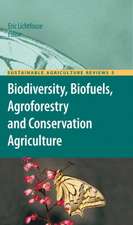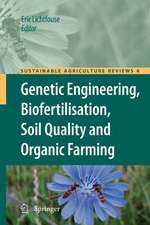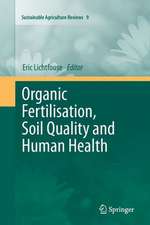Methods for Bioremediation of Water and Wastewater Pollution: Environmental Chemistry for a Sustainable World, cartea 51
Editat de Inamuddin, Mohd Imran Ahamed, Eric Lichtfouse, Abdullah M. Asirien Limba Engleză Hardback – 6 oct 2020
| Toate formatele și edițiile | Preț | Express |
|---|---|---|
| Paperback (1) | 946.34 lei 38-44 zile | |
| Springer International Publishing – 7 oct 2021 | 946.34 lei 38-44 zile | |
| Hardback (1) | 1118.62 lei 3-5 săpt. | |
| Springer International Publishing – 6 oct 2020 | 1118.62 lei 3-5 săpt. |
Din seria Environmental Chemistry for a Sustainable World
- 18%
 Preț: 1118.45 lei
Preț: 1118.45 lei - 15%
 Preț: 645.79 lei
Preț: 645.79 lei - 15%
 Preț: 653.14 lei
Preț: 653.14 lei - 15%
 Preț: 648.24 lei
Preț: 648.24 lei - 15%
 Preț: 643.34 lei
Preț: 643.34 lei - 15%
 Preț: 651.51 lei
Preț: 651.51 lei - 15%
 Preț: 646.62 lei
Preț: 646.62 lei - 18%
 Preț: 956.81 lei
Preț: 956.81 lei - 18%
 Preț: 959.98 lei
Preț: 959.98 lei - 15%
 Preț: 646.62 lei
Preț: 646.62 lei - 18%
 Preț: 1389.30 lei
Preț: 1389.30 lei - 18%
 Preț: 1229.10 lei
Preț: 1229.10 lei - 18%
 Preț: 1001.81 lei
Preț: 1001.81 lei - 18%
 Preț: 899.21 lei
Preț: 899.21 lei - 18%
 Preț: 1120.18 lei
Preț: 1120.18 lei - 18%
 Preț: 896.08 lei
Preț: 896.08 lei - 18%
 Preț: 788.72 lei
Preț: 788.72 lei - 18%
 Preț: 1009.70 lei
Preț: 1009.70 lei - 15%
 Preț: 650.86 lei
Preț: 650.86 lei - 15%
 Preț: 646.62 lei
Preț: 646.62 lei - 18%
 Preț: 1017.62 lei
Preț: 1017.62 lei - 18%
 Preț: 1118.62 lei
Preț: 1118.62 lei - 15%
 Preț: 644.95 lei
Preț: 644.95 lei - 5%
 Preț: 915.58 lei
Preț: 915.58 lei - 24%
 Preț: 751.40 lei
Preț: 751.40 lei - 18%
 Preț: 1008.12 lei
Preț: 1008.12 lei - 18%
 Preț: 1113.89 lei
Preț: 1113.89 lei - 18%
 Preț: 950.52 lei
Preț: 950.52 lei - 18%
 Preț: 959.98 lei
Preț: 959.98 lei - 15%
 Preț: 648.42 lei
Preț: 648.42 lei - 18%
 Preț: 950.96 lei
Preț: 950.96 lei - 23%
 Preț: 852.87 lei
Preț: 852.87 lei - 18%
 Preț: 959.50 lei
Preț: 959.50 lei - 20%
 Preț: 647.13 lei
Preț: 647.13 lei - 24%
 Preț: 744.57 lei
Preț: 744.57 lei - 18%
 Preț: 1215.22 lei
Preț: 1215.22 lei - 20%
 Preț: 570.16 lei
Preț: 570.16 lei - 24%
 Preț: 824.11 lei
Preț: 824.11 lei - 15%
 Preț: 647.59 lei
Preț: 647.59 lei
Preț: 1118.62 lei
Preț vechi: 1364.17 lei
-18% Nou
Puncte Express: 1678
Preț estimativ în valută:
214.04€ • 224.08$ • 177.11£
214.04€ • 224.08$ • 177.11£
Carte disponibilă
Livrare economică 15-29 martie
Preluare comenzi: 021 569.72.76
Specificații
ISBN-13: 9783030489847
ISBN-10: 3030489841
Pagini: 424
Ilustrații: XV, 424 p. 52 illus., 33 illus. in color.
Dimensiuni: 155 x 235 mm
Greutate: 0.73 kg
Ediția:1st ed. 2020
Editura: Springer International Publishing
Colecția Springer
Seria Environmental Chemistry for a Sustainable World
Locul publicării:Cham, Switzerland
ISBN-10: 3030489841
Pagini: 424
Ilustrații: XV, 424 p. 52 illus., 33 illus. in color.
Dimensiuni: 155 x 235 mm
Greutate: 0.73 kg
Ediția:1st ed. 2020
Editura: Springer International Publishing
Colecția Springer
Seria Environmental Chemistry for a Sustainable World
Locul publicării:Cham, Switzerland
Cuprins
Chapter 1 Pseudomonas species for the environmental cleaning of toxic heavy metals.- Chapter 2 Hardware, Hardware and Software Remediation technologies for Water Resources Pollution.- Chapter 3 Anaerobic Biotechnology for the Treatment of Pharmaceutical and Hospital Wastewaters Treatment.- Chapter 4 Bacterial metabolites for removal of toxic dyes and heavy metals.- Chapter 5 Bacterial biofilms for bioremediation of metal-contaminated aquatic environments.- Chapter 6 Laccase-mediated bioremediation of dye-based hazardous pollutants.- Chapter 7 Remediation of freshwaters contaminated by cyanobacteria.- Chapter 8 Biochemical methods for water purification.- Chapter 9 Biosorptive elimination of toxic pollutants from contaminated water.- Chapter 10 Microbial exopolymeric substances for metal removal.- Chapter 11 Bioremediation of Bisphenols and Phthalates from Industrial effluents: A Review.- Chapter 13 Potential of Tree barks and bark extracts in the Bioremediation of Heavy metals from polluted water sources: A review.- Chapter 14 Environmental Effects of Textile Dyes and Their Microbial Detoxification.- Chapter 15 Natural remediation techniques for water quality protection and restoration.- Chapter 16 Phytoextraction of heavy metals from complex industrial waste disposal sites.- Chapter 17 Biosorption of Nickel (II) and Cadmium (II).- Chapter 18 Biological strategies for heavy metal remediation.
Notă biografică
Dr. Inamuddin is currently working as Assistant Professor in the Chemistry Department, Faculty of Science, King Abdulaziz University, Jeddah, Saudi Arabia. He is a permanent faculty member (Assistant Professor) at the Department of Applied Chemistry, Aligarh Muslim University, Aligarh, India. He obtained Master of Science degree in Organic Chemistry from Chaudhary Charan Singh (CCS) University, Meerut, India, in 2002. He received his Master of Philosophy and Doctor of Philosophy degrees in Applied Chemistry from Aligarh Muslim University (AMU), India, in 2004 and 2007, respectively. He has extensive research experience in multidisciplinary fields of Analytical Chemistry, Materials Chemistry, and Electrochemistry and, more specifically, Renewable Energy and Environment. He has worked on different research projects as project fellow and senior research fellow funded by University Grants Commission (UGC), Government of India, and Council of Scientific and Industrial Research (CSIR), Government of India. He has received Fast Track Young Scientist Award from the Department of Science and Technology, India, to work in the area of bending actuators and artificial muscles. He has completed four major research projects sanctioned by University Grant Commission, Department of Science and Technology, Council of Scientific and Industrial Research, and Council of Science and Technology, India. He has published 139 research articles in international journals of repute and eighteen book chapters in knowledge-based book editions published by renowned international publishers. He has published forty-six edited books with Springer, United Kingdom, Elsevier, Nova Science Publishers, Inc. U.S.A., CRC Press Taylor & Francis Asia Pacific, Trans Tech Publications Ltd., Switzerland, IntechOpen Limited, U.K. and Materials Science Forum LLC, U.S.A. He is the member of various editorial boards of the journals and serving as associate editor for journals such as Environmental Chemistry Letter, Applied Water Science, Euro-Mediterranean Journal for Environmental Integration, Springer-Nature, Frontiers Section Editor of Current Analytical Chemistry, published by Bentham Science Publishers, editorial board member for Scientific Reports-Nature, editor for Eurasian Journal of Analytical Chemistry and Review Editor, Frontiers in Chemistry, published by Frontiers, U.K. He is also guest editing various special thematic special issues to the journals of Elsevier, Bentham Science Publishers and John Wiley & Sons, Inc. He has attended as well as chaired sessions in various international and national conferences. He has worked as a Postdoctoral Fellow, leading a research team at the Creative Research Initiative Center for Bio-Artificial Muscle, Hanyang University, South Korea, in the field of renewable energy, especially biofuel cells. He has also worked as a Postdoctoral Fellow at the Center of Research Excellence in Renewable Energy, King Fahd University of Petroleum and Minerals, Saudi Arabia, in the field of polymer electrolyte membrane fuel cells and computational fluid dynamics of polymer electrolyte membrane fuel cells. He is a life member of the Journal of the Indian Chemical Society. His research interest includes ion exchange materials, a sensor for heavy metal ions, biofuel cells, supercapacitors and bending actuators.
Dr. Mohd Imran Ahamed received his Ph.D degree on the topic "Synthesis and characterization of inorganic-organic composite heavy metals selective cation-exchangers and their analytical applications", from Aligarh Muslim University, Aligarh, India in 2019. He has published several research and review articles in the journals of international recognition. He has also edited various books which are published by Springer, CRC Press Taylor & Francis Asia Pacific and Materials Science Forum LLC, U.S.A. He has completed his B.Sc. (Hons) Chemistry from Aligarh Muslim University, Aligarh, India, and M.Sc. (Organic Chemistry)from Dr. Bhimrao Ambedkar University, Agra, India. His research work includes ion-exchange chromatography, wastewater treatment, and analysis, bending actuator and electrospinning.
Dr. Eric Lichtfouse is a biogeochemist at Aix Marseille University who has invented carbon-13 dating, a molecular-level method allowing to study the dynamics of organic compounds in temporal pools of complex environmental media. He is Chief Editor of the journal Environmental Chemistry Letters, and the book series Sustainable Agriculture Reviews and Environmental Chemistry for a Sustainable World. He is the author of the book Scientific Writing for Impact Factor Journals, which includes an innovative writing tool: the Micro-Article.
Dr. Mohd Imran Ahamed received his Ph.D degree on the topic "Synthesis and characterization of inorganic-organic composite heavy metals selective cation-exchangers and their analytical applications", from Aligarh Muslim University, Aligarh, India in 2019. He has published several research and review articles in the journals of international recognition. He has also edited various books which are published by Springer, CRC Press Taylor & Francis Asia Pacific and Materials Science Forum LLC, U.S.A. He has completed his B.Sc. (Hons) Chemistry from Aligarh Muslim University, Aligarh, India, and M.Sc. (Organic Chemistry)from Dr. Bhimrao Ambedkar University, Agra, India. His research work includes ion-exchange chromatography, wastewater treatment, and analysis, bending actuator and electrospinning.
Dr. Eric Lichtfouse is a biogeochemist at Aix Marseille University who has invented carbon-13 dating, a molecular-level method allowing to study the dynamics of organic compounds in temporal pools of complex environmental media. He is Chief Editor of the journal Environmental Chemistry Letters, and the book series Sustainable Agriculture Reviews and Environmental Chemistry for a Sustainable World. He is the author of the book Scientific Writing for Impact Factor Journals, which includes an innovative writing tool: the Micro-Article.
Textul de pe ultima copertă
This book presents advanced techniques for wastewater treatment and the chapters review the environmental impact of water pollution, the analysis of water quality, and technologies for the preservation of water resources. Also outlined in this volume is the bioremediation of heavy metals, dyes, bisphenols, phthalates, cyanobacteria in contaminated water and wastewater. Another focus of this book is the use of natural remediation techniques such as bacterial biofilms and enzymes.
Caracteristici
Discusses bioremediation techniques for wastewater treatment Provides in-depth literature on bioremediation of heavy metals, dyes, bisphenols phthalates, cyanobacteria contaminated water Provide overview on the impact of water pollution, analysis and prevention technologies



